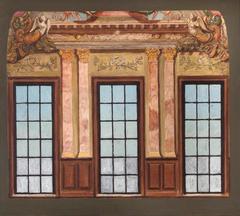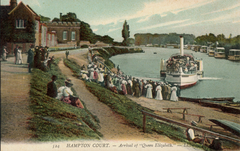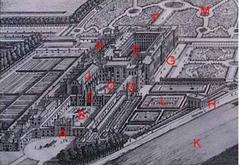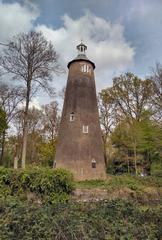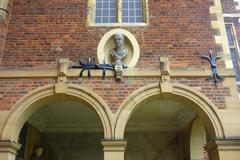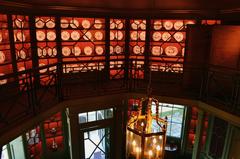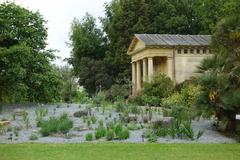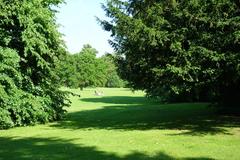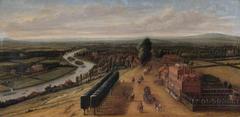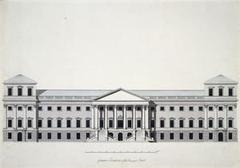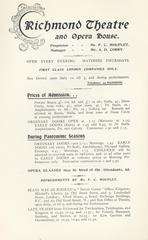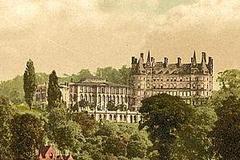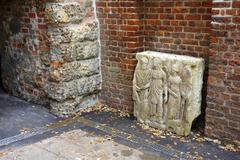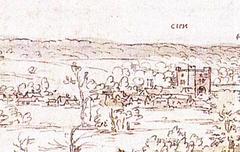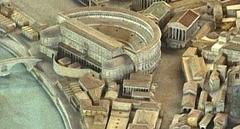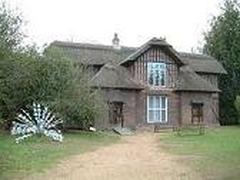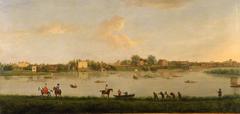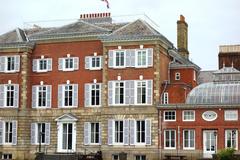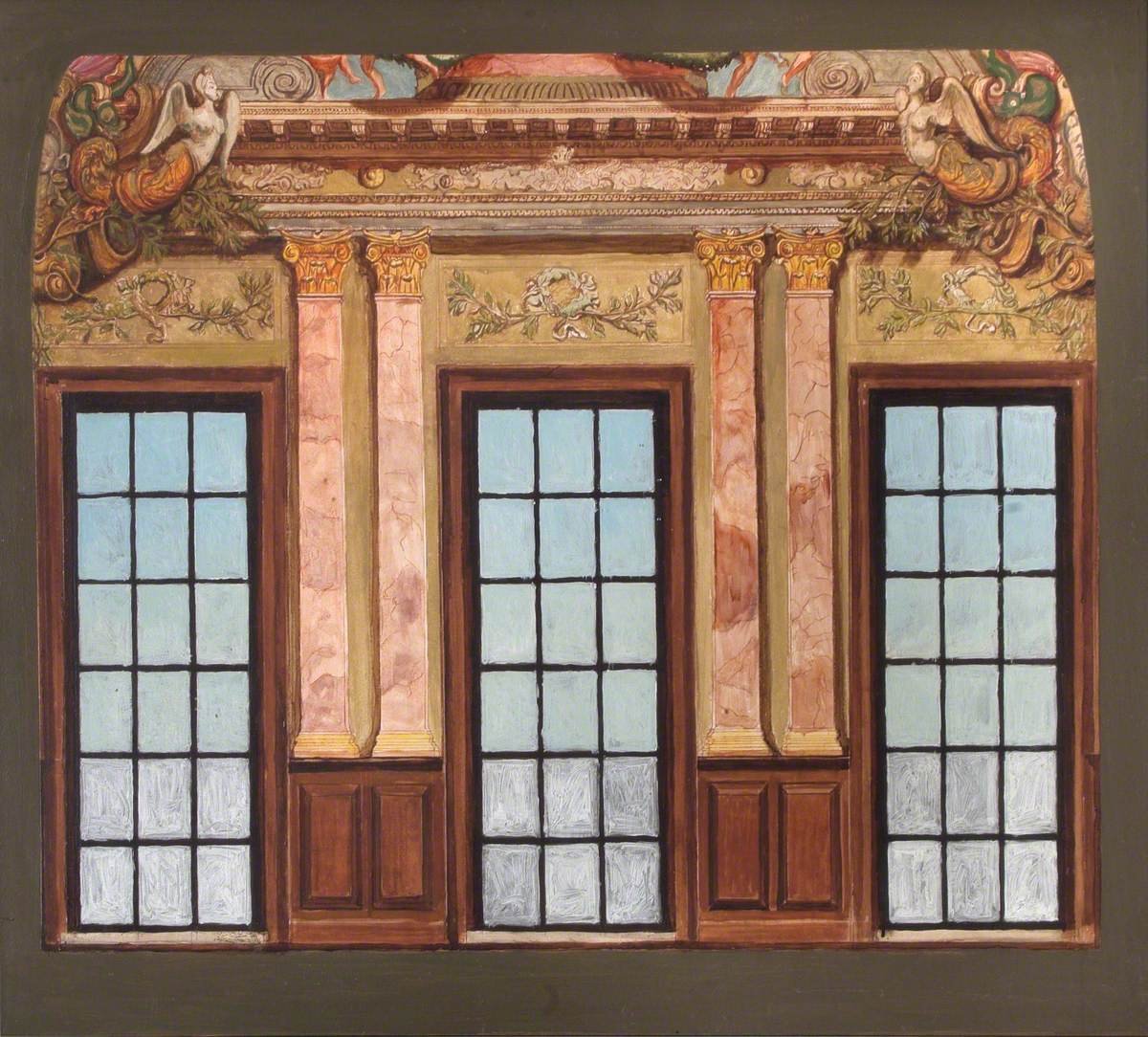
Hampton Court Palace: Visiting Hours, Tickets, and Historical Sites in Richmond, United Kingdom
Date: 14/06/2025
Introduction
Hampton Court Palace, majestically situated on the banks of the River Thames in Richmond, is an enduring icon of British royal heritage and architectural splendor. With origins dating back to the Domesday Book of 1086, the palace presents a fascinating journey through more than 500 years of English history, art, and culture. From its medieval beginnings with the Knights Hospitallers, through the palatial ambitions of Cardinal Wolsey and Henry VIII, to the Baroque transformations led by William III and Mary II under Sir Christopher Wren, Hampton Court Palace is a living testament to centuries of royal power and innovation.
Today, the palace boasts over 1,000 rooms, 60 acres of formal gardens, and hosts major cultural events like the RHS Hampton Court Palace Garden Festival. Visitors can experience highlights such as the breathtaking Great Hall, the Chapel Royal, the Tudor Kitchens, and the legendary Hampton Court Maze. With guided tours, accessible facilities, and a diverse calendar of events, Hampton Court Palace offers an immersive and memorable experience for all.
This comprehensive guide will provide detailed information on visiting hours, tickets, historical background, architectural significance, travel tips, and nearby attractions—ensuring your visit is both enriching and well-prepared (Historic Royal Palaces, Google Arts & Culture).
Contents
- Early Origins and Medieval Foundations
- Cardinal Wolsey’s Vision and Tudor Expansion
- Tudor Splendor under Henry VIII
- Stuart and Baroque Transformations
- Later Royal Connections and Public Opening
- Preservation and Modern Significance
- Visiting Hampton Court Palace: Hours, Tickets, and Travel Tips
- Architectural Legacy and Gardens
- Cultural Impact and Events
- FAQs
- Plan Your Visit: Practical Tips and Recommendations
Early Origins and Medieval Foundations
The earliest roots of Hampton Court Palace can be traced to the Domesday Book of 1086, which mentions “Hamntone” as part of Middlesex. In the 13th century, the Knights Hospitallers acquired the estate, using it as a rural retreat and farm (Google Arts & Culture). By the late 15th century, Sir Giles Daubeney, a courtier to Henry VII, had leased and transformed the property into a substantial brick-built, moated house, suitable for royal entertainment (Google Arts & Culture).
Cardinal Wolsey’s Vision and Tudor Expansion (1514–1529)
In 1514, Thomas Wolsey, Archbishop of York and chief minister to Henry VIII, leased Hampton Court and began a lavish rebuilding project. Wolsey’s palace rivaled the king’s own residences, featuring luxurious state apartments, expansive kitchens, and formal gardens designed to impress foreign dignitaries and the Tudor court (Buckingham Palace). After Wolsey’s fall from royal favor, Henry VIII took possession in 1529 and began to shape the palace into a symbol of Tudor grandeur (Britannica).
Tudor Splendor under Henry VIII
Henry VIII expanded Hampton Court to support a vast royal household, making it a hub of government and courtly life (HRP). Key features from this period include:
- The Great Hall: Completed in 1532 with its spectacular hammerbeam roof, the hall remains one of England’s finest examples of Tudor architecture (Google Arts & Culture).
- The Chapel Royal: Remodeled for Henry VIII with a magnificent vaulted ceiling; the site of Edward VI’s christening.
- Base Court and Great Watching Chamber: Spaces that marked the journey from public to private within the Tudor court (HRP).
The palace also included vast kitchens and pleasure gardens, setting the standard for royal residences of the era.
Stuart and Baroque Transformations
After the Tudor era, Hampton Court remained important to the monarchy. The Stuarts, especially James I and Charles I, used the palace for court entertainments. During the English Civil War, the palace was preserved rather than destroyed (Royal Palaces). In the late 17th century, William III and Mary II commissioned Sir Christopher Wren to redesign large sections of Hampton Court in the Baroque style, resulting in:
- Fountain Court: Wren’s elegant colonnades and facades, blending classical proportions with Tudor brickwork.
- State Apartments: Luxurious suites adorned with ornate plasterwork, marble, and gilded details.
- Gardens and Maze: Redesigned in the Dutch style, featuring avenues, parterres, fountains, and the famous maze (Britannica).
Later Royal Connections and Public Opening
George II was the last monarch to reside at Hampton Court. From the late 18th century, it was granted to “grace and favour” residents—widows and dependents of the Crown. In 1838, Queen Victoria opened the palace and gardens to the public, ensuring their preservation (Google Arts & Culture).
Preservation and Modern Significance
Despite fires and centuries of change, Hampton Court Palace remains largely intact. A major fire in 1986 led to extensive restoration of the King’s State Apartments (Google Arts & Culture), and since 1998, the palace has been managed by Historic Royal Palaces, an independent charity (History Tools). Today, Hampton Court is one of the UK’s top ten tourist attractions, welcoming over a million visitors each year.
Visiting Hampton Court Palace: Hours, Tickets, and Travel Tips
Opening Hours
- Generally open daily: 10:00 AM – 6:00 PM (last admission 4:00–5:00 PM; check official site for updates and seasonal hours).
Tickets and Prices
- Adults: £28 (off-peak), £30.90 (peak)
- Children (5–15): £14 (off-peak), £15.50 (peak)
- Seniors/Students: £22.50–£24.70
- Family and concession tickets available.
- Purchase tickets online for best availability and discounts.
Guided Tours and Audio Guides
- Free audio guides (multi-language) included with admission.
- Themed and expert-led guided tours available; see events calendar for details.
Accessibility
- Most public areas are wheelchair accessible.
- Accessible toilets and parking on-site.
- Free admission for carers/companions (Accessibility info).
Getting There
- Train: Direct from London Waterloo to Hampton Court Station (35 mins, 5-min walk).
- Bus: Routes 111, 216, 411, 461, 513 (from Kingston), R68 (from Richmond).
- Riverboat: April–October from Westminster via Kew.
- Car: Limited (paid) parking on-site; public transport is recommended.
Facilities
- Toilets (including accessible), lockers, cafes, restaurants, and gift shops on-site.
Special Events
- RHS Hampton Court Palace Garden Festival (July)
- Hampton Court Palace Music Festival (summer)
- Historical reenactments, children’s activities, and seasonal events—see events page.
Photography
- Allowed in most areas except Chapel Royal and Cumberland Art Gallery. No flash or tripods.
Nearby Attractions
- Richmond Park, Kew Gardens, Bushy Park, Kingston upon Thames.
Architectural Legacy and Gardens
Architectural Highlights
- Tudor Palace: The Great Hall, Tudor Kitchens, Wolsey Rooms—showcase Perpendicular Gothic and early Renaissance influences (Historic England).
- Baroque Palace: Fountain Court, State Apartments, and the East Front—classical Baroque by Wren.
- Unique Blend: The palace’s mix of Tudor and Baroque elements is rare in England (Homes & Antiques).
Gardens & Outdoor Features
- Formal Gardens: Privy Garden (restored to 1702 design), Great Fountain Garden, Long Water Canal (Historic England).
- Maze: Britain’s oldest surviving hedge maze (1702).
- Great Vine: Planted in 1768, still produces grapes.
- The Magic Garden: Interactive children’s playground inspired by palace history.
Cultural Impact and Events
Hampton Court Palace is not only a preserved monument but a vibrant cultural venue. It hosts music festivals, flower shows, historical reenactments, and is a popular location for film and TV productions (HRP). The palace’s living history approach, with costumed interpreters and immersive displays, brings royal stories to life.
Frequently Asked Questions (FAQs)
Q: What are the opening hours?
A: Typically 10:00 AM–6:00 PM (last admission 4:00–5:00 PM), but always check the official website before your visit.
Q: How do I buy tickets?
A: Purchase online, at the entrance, or via authorized third parties.
Q: Is the palace accessible?
A: Yes, most areas are accessible. Carers enter free; accessible facilities are available.
Q: Are guided tours available?
A: Yes, including expert-led and themed tours as well as free audio guides.
Q: Can I take photos?
A: Yes, in most areas except the Chapel Royal and Cumberland Art Gallery. No flash/tripods.
Q: Are pets allowed?
A: Only assistance dogs are permitted.
Plan Your Visit: Practical Tips and Recommendations
- Visit early or on weekdays for fewer crowds.
- Allow 3–4 hours to explore the palace, gardens, and maze.
- The gardens are especially beautiful in spring and summer; the winter ice rink is popular during the colder months.
- Download the Audiala app for virtual tours, audio guides, and event notifications.
- Follow official channels and plan your trip for the latest info.
Summary and Visitor Recommendations
Hampton Court Palace offers a captivating blend of Tudor history, Baroque splendor, and vibrant cultural activity. From the architectural marvels of the Great Hall and State Apartments to the tranquil beauty of the gardens and the intrigue of the Maze, every visitor finds something memorable. Advance ticket booking, checking seasonal hours, and making use of guided or audio tours are highly recommended for a fulfilling visit. Hampton Court Palace stands not only as a monument to Britain’s royal past but as a living cultural destination (Historic Royal Palaces, Homes & Antiques).
Official Sources and Further Reading
- A Timeline of Hampton Court Palace’s 500-Year History (Google Arts & Culture)
- Hampton Court Palace Listing (Historic England)
- History, Gardens, and Visitor Information (Homes & Antiques)
- Hampton Court Palace Visitor Guide (HRP)
- Hampton Court Palace Official Website (HRP)



Virtual Tour of Hampton Court Palace — Explore the palace online with interactive maps and 360-degree views.
For the latest updates, ticket deals, and exclusive content, download the Audiala app and follow Hampton Court Palace on social media. Plan your visit to this iconic London historical site and experience centuries of royal intrigue, art, and garden beauty.
